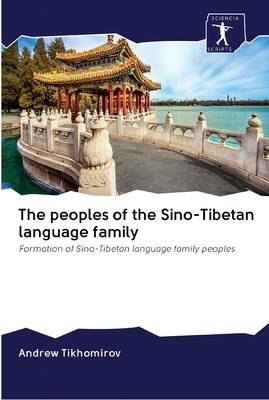
- We will send in 10–14 business days.
- Author: Andrew Tikhomirov
- Publisher: Sciencia Scripts
- Year: 2020
- Pages: 68
- ISBN-10: 6200890013
- ISBN-13: 9786200890016
- Format: 15.2 x 22.9 x 0.4 cm, minkšti viršeliai
- Language: English
- SAVE -10% with code: EXTRA
The peoples of the Sino-Tibetan language family (e-book) (used book) | bookbook.eu
Reviews
Description
The Sino-Tibetan peoples are peoples united by the kinship of languages that make up the Sino-Tibetan family. The Sino-Tibetan peoples live mainly in China, where they constitute the majority of the population. Sino-Tibetan or Sino-Tibetan peoples include: Tibetan-Burman peoples, bai (baitszi, baini) and Chinese peoples, these are: Dungan, Han Chinese (actually Chinese), Hoa, Hueizu. The Sino-Tibetan peoples include the majority of Bhutan (mainly Bhotiya, the official language Bhotiya or Dzongke, close to Tibetan), Myanmar, and Singapore. Significant groups of Sino-Tibetan peoples also inhabit Thailand, Vietnam, Laos, Nepal, India and others. The Russian word "China" is borrowed from the Central Asian peoples, who gave the country this name, according to one of the versions, by the name of the people of Mongolian origin - the Chinese, who in ancient times owned the northern part of China. The Western European and Middle Eastern names of China date back to the word "Chin", to the Iranian designation of the country's name, in German, Dutch, Spanish and English: China, in French: Chine, in Serbian: China. This name comes from the name of the ancient Chinese kingdom Qin.
EXTRA 10 % discount with code: EXTRA
The promotion ends in 22d.16:00:20
The discount code is valid when purchasing from 10 €. Discounts do not stack.
- Author: Andrew Tikhomirov
- Publisher: Sciencia Scripts
- Year: 2020
- Pages: 68
- ISBN-10: 6200890013
- ISBN-13: 9786200890016
- Format: 15.2 x 22.9 x 0.4 cm, minkšti viršeliai
- Language: English English
The Sino-Tibetan peoples are peoples united by the kinship of languages that make up the Sino-Tibetan family. The Sino-Tibetan peoples live mainly in China, where they constitute the majority of the population. Sino-Tibetan or Sino-Tibetan peoples include: Tibetan-Burman peoples, bai (baitszi, baini) and Chinese peoples, these are: Dungan, Han Chinese (actually Chinese), Hoa, Hueizu. The Sino-Tibetan peoples include the majority of Bhutan (mainly Bhotiya, the official language Bhotiya or Dzongke, close to Tibetan), Myanmar, and Singapore. Significant groups of Sino-Tibetan peoples also inhabit Thailand, Vietnam, Laos, Nepal, India and others. The Russian word "China" is borrowed from the Central Asian peoples, who gave the country this name, according to one of the versions, by the name of the people of Mongolian origin - the Chinese, who in ancient times owned the northern part of China. The Western European and Middle Eastern names of China date back to the word "Chin", to the Iranian designation of the country's name, in German, Dutch, Spanish and English: China, in French: Chine, in Serbian: China. This name comes from the name of the ancient Chinese kingdom Qin.


Reviews